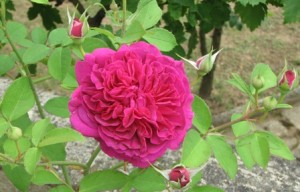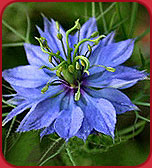The acid-alkaline theory, as it is called, attempts to explain how tumours develop and proliferate. In a nutshell: since cancer cells thrive in an acidic environment, cancer forms when too much acid builds up inside the body. It follows that if we eat alkalizing foods we can prevent or even reverse a cancerous trend. No acid, no cancer. Ah, fantastic. So simple.
Too simple…
The May 2008 newsletter (see: http://tinyurl.com/4ovujo) of the American Institute of Cancer discusses this unsubstantiated theory […] based on lab studies that suggest cancer cells thrive in an acidic (low pH) environment, but cannot survive in alkaline (high pH) surroundings. While these findings are accurate, they apply only to cells in an isolated lab setting. Altering the cell environment of the human body to create a less-acidic, less-cancer-friendly environment is virtually impossible.
Impossible because, generally speaking, our body seeks to maintain a constant equilibrium between acidity and alkalinity. Too much acid in our bloodstream? No problem, it gets excreted via our kidneys. Too much alkali? The kidneys intervene, again. So no matter how many alkaline foods we eat or drink, we cannot change our body’s pH.
Jacob Schor, a naturopathic doctor who works at the Denver Naturopathic Clinic, wrote an interesting report (see: http://tinyurl.com/2oon73) debunking the acid-alkaline theory once and for all. One of his statements, based on recent scientific studies, is that an acidic environment doesn’t cause cancer. Indeed, it’s the other way around: Rapidly growing tumors create an acidic environment lacking in oxygen. […] Changing the pH of a tumor does not change its growth rate significantly, nor does it seem to lead to cell death.
The acid-alkaline theory has some positive features, though, as Jacob points out: it promotes the ingestion of foods that are good for us–fruit and vegetables, e.g.–and tells us to cut down on processed foods that are high in sugar. Good advice.
Ah, by the way, if you have ever thought of buying “alkaline” water, please have a look at Dr. Andrew Weil’s report: http://tinyurl.com/2fplhn. It may save you some money.
I have to confess that, more than a year ago, when I first read about the acid-alkaline theory, I was intrigued enough to print out an acid/alkaline food chart and hang it up in my kitchen. Well, that chart has ended up in the trash can.
Balderdash.


 bed, she came back downstairs as though nothing had happened and happily ate her breakfast on the kitchen counter (we usually discourage this type of behaviour, by the way…). She is now keeping a watchful eye on the birds flying outside my study window (see photo).
bed, she came back downstairs as though nothing had happened and happily ate her breakfast on the kitchen counter (we usually discourage this type of behaviour, by the way…). She is now keeping a watchful eye on the birds flying outside my study window (see photo).